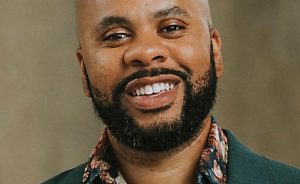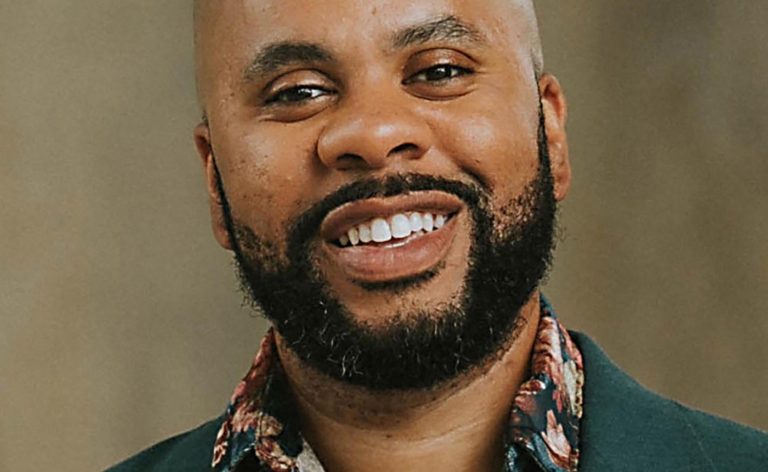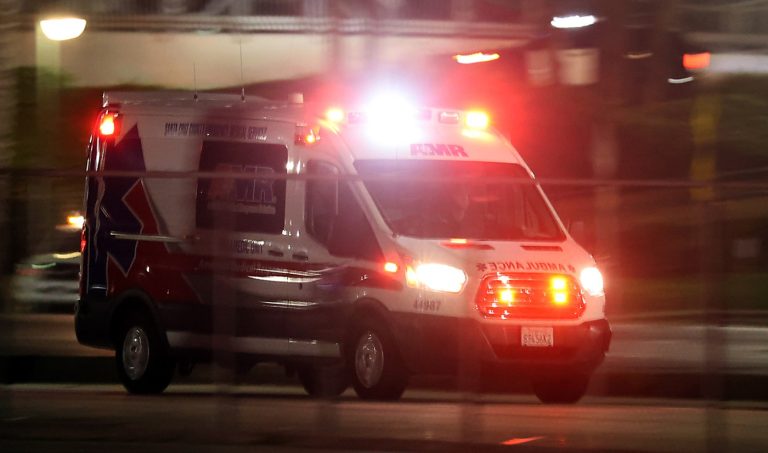SAN JOSE — Santa Clara County District Attorney Jeff Rosen says he continues to support Proposition 47, the landmark reform law credited with keeping low-level offenders out of overcrowded prisons, and which could soon be declawed by a ballot measure that blames the law for enabling rampant serial theft and related crimes.
Santa Clara County District Attorney Jeff Rosen, shown here in a November 2023 photo outside the Hall of Justice, says he continues to support Proposition 47, the landmark criminal justice reform law credited with reducing state prison populations, but is now the target of a ballot initiative that blames the law for rampant serial theft and related crimes. (Karl Mondon/Bay Area News Group file photo)
Rosen was one of just three California district attorneys to endorse Proposition 47, which voters passed in 2014. This November, voters will be presented with Proposition 36, which aims to amend the existing law by undoing the $950 threshold for theft to be charged as a felony and stiffening punishments for drug dealing that has fueled the fentanyl and opioid crises.
“I supported Prop. 47. I still support it and think it has done a lot of good things,” Rosen said in an interview with the Bay Area News Group. “Prop. 47 was responding to a number of things happening at the time, one of which was enormous prison overcrowding. We don’t want to build more prisons. Theft and drug addiction, let’s move those away from prison to other forms of accountability.”
Rosen said he sympathizes with public frustration with viral videos of shoplifting and retail theft and the scourge of fentanyl but is not convinced Proposition 36 provides a responsive solution. He noted that organized retail theft, characterized by large groups overwhelming store security and taking off with stolen goods, is almost always in excess of $950 and thus can be charged as felonies.
“The Legislature has addressed the issue and allocated millions of dollars for law enforcement to hire more personnel to deal with organized retail theft,” Rosen said. “It’s happening and it’s working.”
A week ago, Gov. Gavin Newsom traveled to San Jose, where he signed 10 anti-theft bills into law, including Assembly Bill 2943, which addresses one of the pillars of Proposition 36. The ballot measure proposes to make any theft, regardless of value, a felony if it is committed by a person with two prior theft convictions. AB 2943 allows prosecutors to charge someone with a felony by aggregating multiple thefts to meet the $950 threshold.
The Yes on Proposition 36 campaign said that the signed bills were “half measures, failing to address the fundamental issues of habitual repeat theft, the fentanyl epidemic, and the ongoing homelessness crisis, which remains unaddressed due to the lack of strong incentives for drug treatment.”
Rosen’s stance is facing strong political headwinds: An Aug. 16 poll conducted by the Los Angeles Times and UC Berkeley’s Institute of Governmental Studies found 56 percent of likely California voters plan to vote for Proposition 36, a 2-to-1 advantage over their counterparts.
The ballot measure would also charge possession of certain drugs like fentanyl as “treatment-mandated” felonies and present offenders with the choice of entering rehab — and the dismissal of charges upon completion — or facing up to three years in prison. Proposition 36 would also mandate prison time for selling fentanyl and other hard drugs and make it easier to charge dealers with murder if their drugs lead to an overdose death.
Rosen said any increase in mandated treatment will run up against the reality of capacity, particularly in the state’s largest counties.
“Everyone wants people addicted to drugs to go to treatment. What this initiative doesn’t do is provide more funding for drug treatment,” he said. “If there’s not a bed available, you’re not addressing it.”
“We’re not going to punish our way out of drug addiction. We’ve tried it and it didn’t work. Santa Clara County is a relatively well-resourced county, and we don’t have enough drug treatment, and I can’t imagine other places would either,” Rosen added. “And threatening people with jail? That’s not a threat to them. There are illegal drugs in jail.”
Yolo County District Attorney Jeff Reisig, one of the architects of Proposition 36, said if the measure passes, he would expect it to be supported by Proposition 1, the $6.8 billion bond measure voters narrowly approved in March to fund 6,800 treatment beds.
“From our perspective, the money’s there and the beds are there, or can be quickly brought into play once the money’s there,” Reisig said in an interview.
The statistical case for Proposition 36 is mixed. According to U.S. Department of Justice figures, as of the end of 2023, property crime continued to trend downward over the past decade in the nine Bay Area counties, except for Alameda County. Statewide, the property crime rate has decreased more than 14 percent.
But an analysis of California Department of Justice figures by the Public Policy Institute of California shows that between 2019 and 2023, shoplifting increased by 28 percent, with 90 percent of that surge occurring in Alameda, San Mateo, Los Angeles and Sacramento counties.
Additionally, Proposition 36 supporters claim shoplifting crimes remain underreported because of low-priority police responses. In an Aug. 2 blog post, PPIC gave credence to that idea, stating that “these incidents — especially low-value thefts — are likely underreported.”
Reisig said while Proposition 47 was effective in reducing the prisoner population, “it was miscalculated in the execution, and we’ve paid a price for that in the past decade.”
“Everything is locked up in stores, and then you see the store closures, viral videos,” he said. “All of that creates the reality that there is not consequence.”
Reisig said he is sympathetic to the plight of drug addiction and openly talks about his nephew, who lives on the street and steals to feed an opioid addiction. He argues that charging a felony for someone with two prior theft convictions is a means of fortifying the state’s response when it is evident intervention isn’t working.
“We get to utilize all the harm reduction models we know. Once in a while that works. But on that third conviction, it triggers the treatment-mandated felony,” Reisig said. “This is what is required to incentivize them to choose treatment. Are people going to fail and relapse? Yes … but as long as they re-engage, the whole model is set up to accommodate that.”
He also stressed that Proposition 36 expands charging latitude but is not a mandate: “If Jeff (Rosen) wants to keep charging misdemeanors, have at it.”
Tinisch Hollins, executive director of Californians for Safety and Justice, said she is “grateful” to Rosen for his stance in the face of high-wattage opposition — including San Jose Mayor Matt Mahan and San Francisco Mayor London Breed, the state associations of police chiefs, sheriffs and district attorneys and businesses ranging from small Bay Area restaurants to Walmart, Target and Home Depot. She says the harsher punishments Proposition 36 proposes “create more barriers for vulnerable populations.”
“It brings us back to the War on Drugs and mandating treatment for individuals when we don’t have capacity, and there are barriers for access. Prop. 47 is being scapegoated when it diverted millions of dollars to effective mental health and treatment programs,” Hollins said. “From the moment Prop. 47 was passed, there was an attempt to blame criminal justice reform for everything from rises in certain types of crime to global warming.”
Related Articles
Alleged Oakland gang leader was on a mission for revenge after brother’s homicide, police say. Now the feds have taken the case
Five California prisoners allegedly kill Pittsburg man who was serving life for murdering magazine editor
Fresno man charged with murdering Oakland teen in shooting falsely reported to SFPD
Ex-Castro Valley High School teacher pleads no contest to sex offense involving student, avoids prison through plea deal
CHP seizes $450,000 in stolen goods, arrests Oakland woman
“It’s a convenient narrative to say we are being too soft on crime and this is why these things are happening. It’s preying on public perception and frustration,” she added. “We can’t rely on jail and prison as a triage. Over-relying on this system to address homelessness, fentanyl and retail theft does not make sense.”
The nonpartisan Legislative Analyst’s Office estimated that Proposition 36 would raise state costs from between “several tens of millions of dollars” and “the low hundreds of millions of dollars” by increasing the prison population. The LAO mentioned the potential for the measure to reduce costs as a result of lower crime, but the likelihood of that is “unknown.”
Rosen is skeptical of the idea that escalating penalties for theft and drug crimes will affect how law enforcement responds.
“Before Prop. 47, if you lived in a wealthy city with low crime and there was a shoplifting at the Walgreens or Target, police responded, same as today. They don’t care if it’s a misdemeanor or a felony. Before Prop. 47 if you lived in a community with high rates of crime and lower resources, police did not respond, and they’re not responding today,” Rosen said. “It’s not like the law turns on or turns off the amount of crime that happens.”












